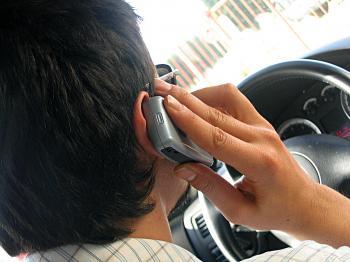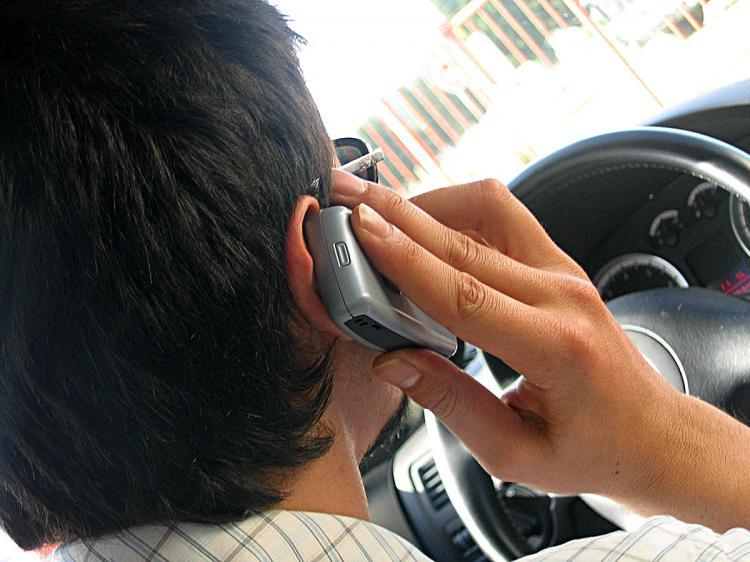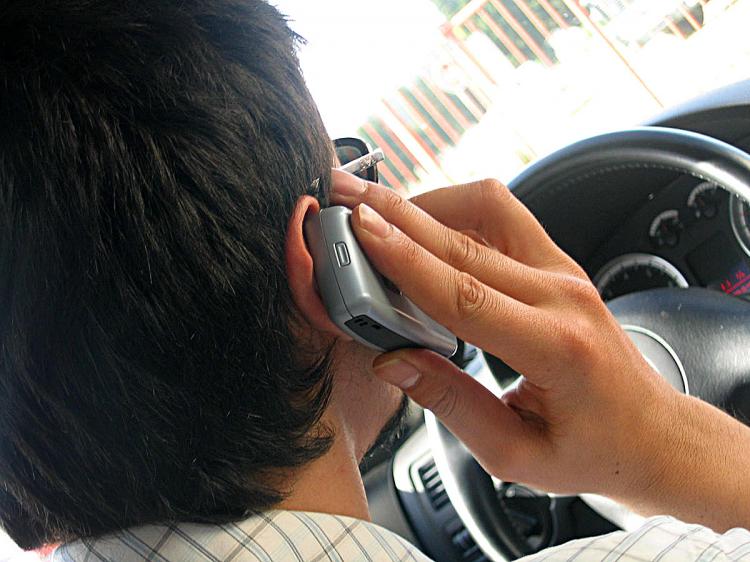The “Shut up and drive!” bumper sticker fairly summarizes my feelings toward vehicular cell phone use, though I might preface my request with a polite, “Please.” If you’re hurling through space at high speeds, I’m sure your call can wait.
Several states throughout the country have gently restricted drivers’ cell phone habits, but students in Minnesota are pushing for something more. While legislation in some areas has allowed motorists to use a handsfree device, the proposed law in St. Paul would forbid cellular communication of any kind in a moving vehicle.
Katherine Garvey, a high school senior who contributed to the proposal, told the local NBC affiliate that, if passed, it would be the “first law in the U.S. to ban handsfree devices, which is actually kind of cool because research we found shows that handsfree is no different than driving hand-held.”
The city I live in banned drivers from holding a phone in 2005. Motorists can still chat on the road if they use a handsfree device. But does this really ensure safety?
The other day while I was waiting at a stoplight to get on the expressway, I checked my mirror and saw an expensively dressed woman behind the wheel of an enormous silver SUV. Although she was alone, she was giving someone an earful. I couldn’t make out what she was saying, but she was clearly furious. The extreme passion of her rage made me think that she was yelling at her husband or boyfriend.
Because she was observing our city’s handsfree cell law, this infuriated motorist could freely wave her hands above her head, pound the steering wheel, and jab her long painted fingernail toward the dashboard for emphasis—as if the object of her scorn was right in front of her face. As the light changed, I let her go on ahead and made sure to keep my distance.
While this might be a rare occurrence among the millions of yakety-yakking drivers, the truth is that all cellular communications rob us of more mental focus than most motorists might realize.
Showing just how distracting a cell phone can be, in 2009 researchers at Western Washington University tested the concentration of nearly 350 pedestrians. The study tracked walking individuals engaged in various activities (from listening to music to pairs of people talking) and found that, among all the different distractions observed, cell phone users exhibited the greatest lack of focus. These subjects walked slower, often changed directions, and were twice as likely to miss a blatant display right in front of them—a clown on a unicycle.
When faced with a familiar route, many drivers welcome the opportunity to operate on autopilot so they can take care of important business or—better yet—spice up a boring ride with a call to friends or family. Even if a driver must contend with a previously unexplored destination, the convenience of GPS navigation allows for concentration to be diverted to other activities. Somehow we’ve convinced ourselves that as long as both hands are on the wheel it’s good enough.
But the perceived safety of handsfree devices may be responsible for drivers spending even more time on the phone. A 2009 report by the National Highway Traffic Safety Administration found “that drivers who use handsfree phones use them more frequently and for longer durations.”
There is no shortage of studies on cell phones and the dangerously distracted drivers they inspire (last year the National Safety Council reported an annual 1.6 million accidents related to cell phones), but the behavior persists because of our growing cultural obsession with doing multiple things at once.
Despite the wealth of research revealing the inefficiency of multitasking, our desire to fracture our focus among several activities seems just too great to snap us out of this delusion. It may not be such a huge deal when trying to juggle some tasks, but when this fantasy gets behind the wheel, lives are put at risk.
So, unless it’s a life or death situation, please, just shut up and drive. Meanwhile, make sure to keep an eye out for random clowns.
[email protected]
Several states throughout the country have gently restricted drivers’ cell phone habits, but students in Minnesota are pushing for something more. While legislation in some areas has allowed motorists to use a handsfree device, the proposed law in St. Paul would forbid cellular communication of any kind in a moving vehicle.
Katherine Garvey, a high school senior who contributed to the proposal, told the local NBC affiliate that, if passed, it would be the “first law in the U.S. to ban handsfree devices, which is actually kind of cool because research we found shows that handsfree is no different than driving hand-held.”
The city I live in banned drivers from holding a phone in 2005. Motorists can still chat on the road if they use a handsfree device. But does this really ensure safety?
The other day while I was waiting at a stoplight to get on the expressway, I checked my mirror and saw an expensively dressed woman behind the wheel of an enormous silver SUV. Although she was alone, she was giving someone an earful. I couldn’t make out what she was saying, but she was clearly furious. The extreme passion of her rage made me think that she was yelling at her husband or boyfriend.
Because she was observing our city’s handsfree cell law, this infuriated motorist could freely wave her hands above her head, pound the steering wheel, and jab her long painted fingernail toward the dashboard for emphasis—as if the object of her scorn was right in front of her face. As the light changed, I let her go on ahead and made sure to keep my distance.
While this might be a rare occurrence among the millions of yakety-yakking drivers, the truth is that all cellular communications rob us of more mental focus than most motorists might realize.
Showing just how distracting a cell phone can be, in 2009 researchers at Western Washington University tested the concentration of nearly 350 pedestrians. The study tracked walking individuals engaged in various activities (from listening to music to pairs of people talking) and found that, among all the different distractions observed, cell phone users exhibited the greatest lack of focus. These subjects walked slower, often changed directions, and were twice as likely to miss a blatant display right in front of them—a clown on a unicycle.
When faced with a familiar route, many drivers welcome the opportunity to operate on autopilot so they can take care of important business or—better yet—spice up a boring ride with a call to friends or family. Even if a driver must contend with a previously unexplored destination, the convenience of GPS navigation allows for concentration to be diverted to other activities. Somehow we’ve convinced ourselves that as long as both hands are on the wheel it’s good enough.
But the perceived safety of handsfree devices may be responsible for drivers spending even more time on the phone. A 2009 report by the National Highway Traffic Safety Administration found “that drivers who use handsfree phones use them more frequently and for longer durations.”
There is no shortage of studies on cell phones and the dangerously distracted drivers they inspire (last year the National Safety Council reported an annual 1.6 million accidents related to cell phones), but the behavior persists because of our growing cultural obsession with doing multiple things at once.
Despite the wealth of research revealing the inefficiency of multitasking, our desire to fracture our focus among several activities seems just too great to snap us out of this delusion. It may not be such a huge deal when trying to juggle some tasks, but when this fantasy gets behind the wheel, lives are put at risk.
So, unless it’s a life or death situation, please, just shut up and drive. Meanwhile, make sure to keep an eye out for random clowns.
[email protected]







